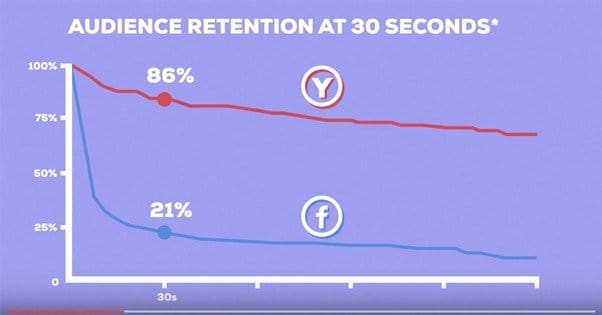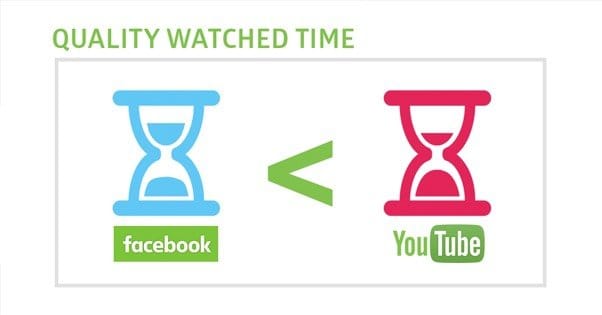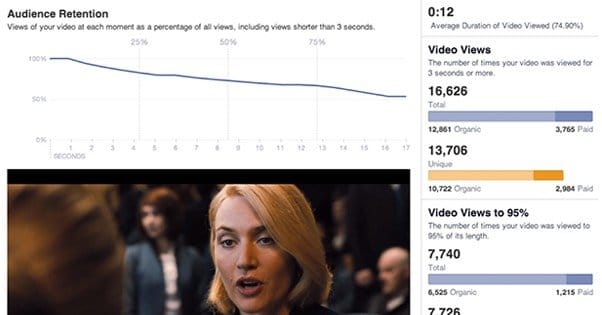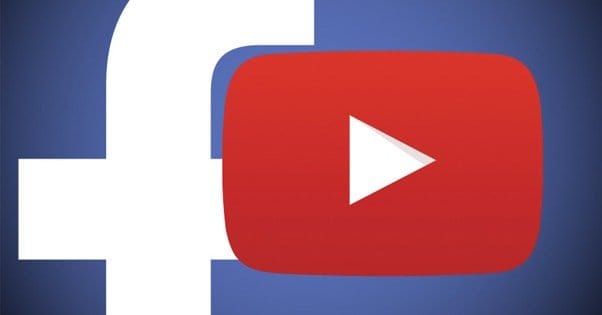 Written by ContentPowered.com
Written by ContentPowered.com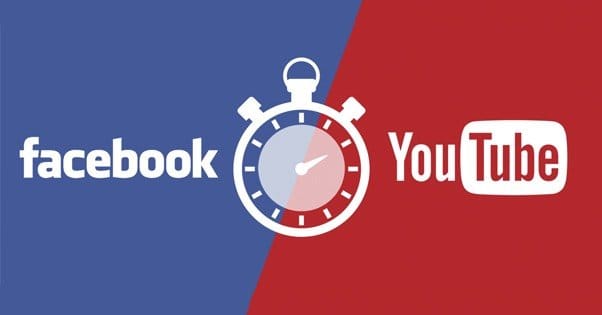
A while back, Facebook started adding their own twist on video in social media. They allowed a few select users to experiment with video posts, and then opened it up to everyone, pages and personal profiles included. Not long after, marketing sites around the web claimed Facebook was the YouTube killer. Facebook videos get more views, they say. They get more engagement, they claim. Is it true, though? Even if it was then, is it now?
It’s clear enough that Facebook has not killed off YouTube. They are fundamentally different sites, for one thing. Facebook doesn’t have a dedicated video search, channel pages, or really anything that YouTube has. It’s the same way YouTube doesn’t have feed walls and the trappings of a social network, outside of their comments section. The similarities between the two sites begin and end at the fact that they both host videos and they both cater to millions of people.
As of the middle of 2015, Facebook averaged more than 4 billion video views per day. Facebook has over a billion monthly active users. These are massive numbers, and they seem insurmountable. Except, well, YouTube is one of the Original Greats, one of the first truly massive sites, and it’s owned by Google. It’s not a lightweight newcomer to the game. Heck, for a time, they were the only real game in town. YouTube has over a billion users itself, and they get nearly 5 billion daily video views.
Of course, Facebook has more to it than just video. In most cases, the video is tertiary to the purpose of the site. Very few brands on Facebook are using it solely as a video host. The lack of channel feeds, of playlists, and of easy video browsing make video a supplement, not a primary focus. Meanwhile, YouTube focuses on one thing, and it does that one thing well. When was the last time you had a real issue with YouTube? It’s been a while for me, since they ditched Flash as their primary video provider. Sure, there’s the occasional removed video, and the occasional non-viewable video due to country restrictions, but the convenience and the value of the YouTube search engine is so good it’s worth using.
Very rarely am I going to think of a video I want to see and visit Facebook to see it. YouTube will have the content, and YouTube will have the search that allows me to find it. Facebook and YouTube videos are at odds, with very different purposes. Even the means of discovering videos to watch is different.
With YouTube, you have numerous discovery options. You can see videos on the front page, for various categories or for trends. You can see videos posted by individual channels you check out, or that you follow. You can see videos sponsored or linked to by other videos, or in the video suggestions. You can follow playlists down the list. You can view embedded videos on other sites.
With Facebook, you can have videos served to you as part of your news feed, or you can stumble across them when you visit the profile of a page that has recently posted a video. That’s about it. You don’t really go searching for videos on Facebook; like everything on that algorithmically dominated site, they come to you.
Unique Characteristics of YouTube and Facebook Videos
As I mentioned, YouTube is where you go to find videos, while Facebook is where you are when videos find you. However, there are more distinctions than just the method of delivery.
For one thing, Facebook videos tend to be much shorter than YouTube videos on average. Way back in 2014, the average length of a Facebook video was just 44 seconds. Not as short as a Vine or an Instagram Video, but shorter than the typical YouTube video. The probably cause for this is the high proportion of mobile users on Facebook. With mobile data caps, loading times, and bandwidth issues, mobile users don’t have the time or the inclination to watch lengthy videos. Short videos, then, are preferable and more likely to be watched all the way through.
Facebook videos also autoplay in the news feed, regardless of your intent to view them or not. On YouTube, you never view a video unless you actually want to view it, as measured by you going to the page for that video or clicking play on it while it’s embedded.
This is actually one major concern with Facebook videos. They claim to have four billion video views, but how many of those views are people scrolling past a video, having the first 1-10 seconds play while they’re reading something else, and moving on? While on YouTube, your core focus is the video. On Facebook, there are a lot of other things to hold your attention, and a video could be playing soundless all the while, racking up “engagement” that’s not really engagement.
To note, Facebook videos count a “view” as any play of the video longer than three seconds, which is a very low bar to clear. Video ads paid for by marketers can be set to only record a view after ten seconds, which is more accurate, but results in lower numbers. The disparity also makes it difficult to compare free videos and paid videos, making paid videos look like they’re performing worse.
Of course, when we talk about actual engagement, we have other things to mention. Facebook videos have all the usual Facebook engagement, which means they track views, clicks to various parts of the video post, likes and other reactions, shares, and comments. YouTube videos have views, adds to playlists, favorites, thumbs of both the up and down variety, and comments.
Facebook’s content-serving algorithm also exists to serve the “best” videos to individuals based on their usage. For example, when a user watches a video all the way through and clicks to unmute it, that indicates that they’re interested in the content. More content of that type will make its way to their feed. It’s all influenced by advertising, targeting, and EdgeRank metrics, of course.
Still, what it ideally means is that while users don’t seek out the videos they want to see, they are given videos they are more likely to watch through. On the other hand, it also means that when users are given videos, those videos aren’t necessarily what they actually want to see or what are fulfilling, it just means those videos are the best at enticing people to watch them. Clickbait videos would get widespread circulation despite being thin on substance, and it’s harder to regulate video clickbait than it is regular clickbait. That’s a problem Facebook will need to figure out how to solve.
Facebook’s biggest strength has always been the wealth of data it records about just about everything. Videos are no exception. While Google Analytics is the industry standard for website analytics, Facebook puts it to shame, at least in terms of ad targeting data. YouTube analytics are flaccid in comparison.
Facebook has one major drawback in terms of video, though, and that’s the snowball nature of EdgeRank. When a content creator produces good content, that content is spread more by more people, who see more of that creator’s content. If a content creator produces bad content, they dig themselves a bit of a hole from which they need to climb to get to a normal frame of reference. This means it can be pretty difficult for a new content creator producing mediocre videos to get through to the masses. The first few videos are crucial, unless you have a thriving audience already.
Facebook isn’t the only platform where it’s hard to get a foothold, though. YouTube can be just as difficult for new marketers to get off the ground, in part because there’s simply so much competition. Almost everything ever posted on the site is available to come up in search results, and often older videos are given preference due to their mass of engagement, even if the newer videos have better, more accurate information.
A Comparison of Engagement
You should know by now that Facebook video and YouTube video are two very different products, that work in different ways. Comparing them is like apples and oranges, and a lot of your potential success on either site will depend on the presence you already have. Still, let’s look at a couple of case studies and see what data suggests.
For the two case studies shown, YouTube seems to perform worse all around. Video views cost more, they receive fewer impressions, they get fewer raw views, and generally just aren’t as good. Of course, this is for paid ad viewing, which is possibly the area where Facebook is the best on the internet as a whole. YouTube will have a hard time standing up to the targeting precision of Facebook.
The question is, which should you use for your marketing?
The answer, if you’ve paid attention to most of the advice on this site, is “both.” Generally speaking, making use of both options rather than picking one or another in any scenario is going to be the best way to go about it, so long as they don’t both have stiff up-front fees or something.
Think about it this way. Most internet users are condition to go to YouTube for their video needs. Need to post a video? Throw it on YouTube. Want to find a music video? It’s on YouTube. Want to watch a movie trailer? YouTube has it. Old commercials, game playthroughs, news; it’s all there. The only things YouTube doesn’t do tend to be movies and TV, and we have Netflix for that.
This means everyone understands and expects YouTube to have what we need. YouTube is also the better source for embedded videos. While Facebook does allow embedded video these days, YouTube still edges ahead in terms of speed and viability.
However, if you want to make a video that seeks out the user, that provides some kind of timely information, or that is a video ad, Facebook tends to be the better place to do it. Videos there can be more precisely targeted to reach the most interested potential users.
What I tend to do is post videos on both sites, though. Most videos are informative and short, when used for marketing purposes. They are perfectly acceptable on both Facebook and on YouTube. Post them on both sites.
If you’re producing a time-sensitive video, Facebook is the better location. Old videos on Facebook fade away, and while they still exist, people don’t go looking for them. By contrast, old videos on YouTube are always are the forefront, and deleting a video tends to have negative consequences. Short-term deal-related videos and such things are best limited to Facebook.
At the same time, extremely lengthy videos should be posted exclusively to YouTube. Facebook users aren’t going to watch a 30 minute video that shows up in their news feed, they’re going to keep scrolling. I like to create a short trailer for the video for Facebook and post the link to the YouTube video in the description.
One thing you should always avoid doing is posting raw YouTube links on Facebook. Because Facebook has created their own competing product, they don’t like to promote YouTube. While they don’t explicitly say so, they do seem to demote those kinds of links to a minor degree. This means posts containing YouTube links tend to have lower reach, lower engagement, and lower metrics all around.
The moral of the story, really, is that videos on different platforms will reach and appeal to different segments of users, even if the videos are the same. Using them both allows you to tap into both audiences, and even if there’s some overlap, you can get a lot of mileage out of using both.
